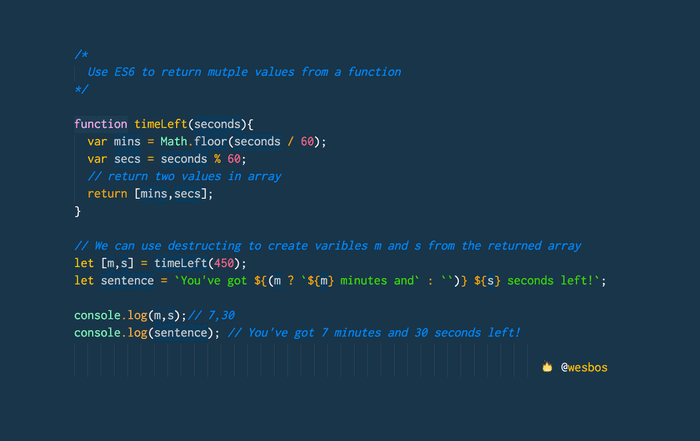

SpreadĮS6 introduces a new operator called the spread operator. For more information on object literals, see Creating Objects (JavaScript).

New methods on String.prototype: codePointAt, normalize, repeat, startsWith, endsWith, and containsĮnhancements to object literal notation in ES6 include the addition of computed properties, concise method definitions, and short-hand for properties whose value is initialized to a same-named variable.New methods on String: String.raw and omCodePoint.New methods on Object: assign, is, getOwnPropertySymbols, and setPrototypeOf.New methods and properties on Number: isFinite, isInteger, isSafeInteger, isNaN, EPSILON, MIN_SAFE_INTEGER, and MAX_SAFE_INTEGER.New Math related functions: sign, trunc, sinh, cosh, tanh, asinh, acosh, atanh, log10, log2, hypot, fround, clz32, cbrt, log1p, and expm1.Math, Number, Object, StringĮS6 introduces dozens of new built-in utility functions and properties to help you inspect and manipulate data. For more information, see Functions (JavaScript).

The arrow (=>) function provides you with a shorthand for the function keyword with lexical "this" binding. Promises allow easier and cleaner asynchronous coding. It is an abstraction for managing interactions with asynchronous APIs. Promises provide you with a mechanism to schedule work to be done on a value that has not yet been computed. For more information about classes, see Classes in JavaScript: Exploring the Implementation in Chakra. A class allows you to create new objects using prototype-based inheritance, constructors, instance methods, and static methods. ClassesĮS6 introduces a syntax for declaring classes. Microsoft Edge for Windows 10 extends the JavaScript enhancements of Internet Explorer 11 with new support for features from the latest ECMAScript 6 (ES6) draft specification.


 0 kommentar(er)
0 kommentar(er)
